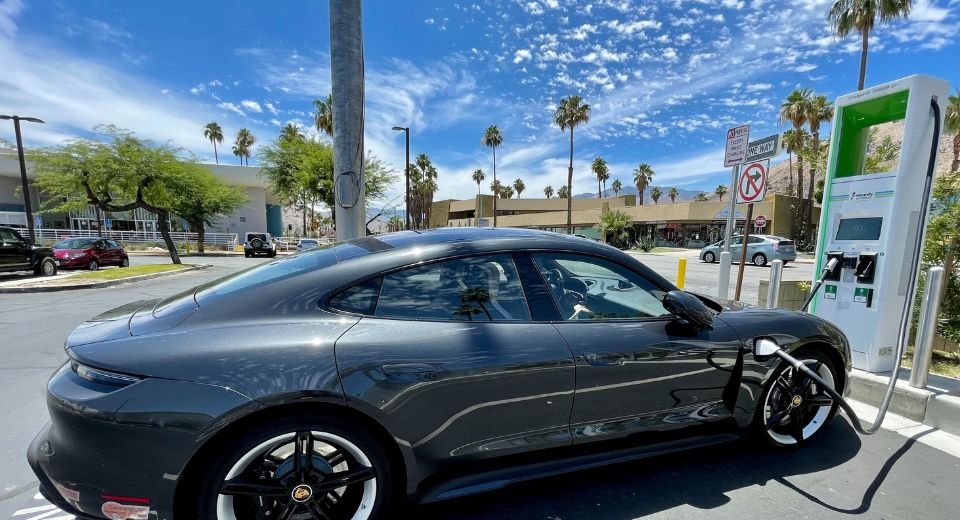HQ Team
February 24, 2023: Scientists have drawn a blueprint for a solid-state battery which is affordable and good enough to drive a car for miles on a single charge.
Researchers at the Lawrence Berkeley National Laboratory (Berkeley Lab) and Florida State University have designed the contours for solid-state batteries less dependent on specific chemical elements, particularly critical metals that are challenging to source due to supply chain issues.
“With our new approach to solid-state batteries, you don’t have to give up affordability for performance,” said co-first author Yan Zeng, a staff scientist in Berkeley Lab’s Materials Sciences Division. “Our work is the first to solve this problem by designing a solid electrolyte with not just one metal but a team of affordable metals.”
In a lithium-ion battery, the electrolyte works like a transfer hub where lithium ions move with an electric charge to either power a device or recharge the battery.
Like other batteries, solid-state batteries store energy and release it to power devices. But rather than liquid or polymer gel electrolytes found in lithium-ion batteries, they use a solid electrolyte.
Prone to overheating
Government, research, and academia have heavily invested in the research and development of solid-state batteries because the liquid electrolytes designed for many commercial batteries are more prone to overheating, fire, and loss of charge.
Since the late 1990s, advances in lithium-ion battery technology have been driven by demands from portable electronics, laptop computers, mobile phones, and power tools.
The battery electric vehicle and the hybrid electric vehicle marketplace have benefited from these performance and energy density advances. Unlike earlier battery chemistries, such as nickel-cadmium, lithium-ion batteries can be discharged and recharged daily and at any charge.
The battery pack makes up a high cost of a battery electric vehicle or a hybrid electric vehicle.
As of December 2019, the cost of electric vehicle batteries has fallen 87% since 2010 on a per kilowatt-hour basis. Vehicles with over 400 kilometres of all-electric range, such as the Tesla Model S, have been commercialised and are now available in various vehicle segments.
Energy efficiency
In terms of operating costs, the price of electricity to run a battery electric vehicle is a small fraction of the fuel cost for equivalent internal combustion engines, reflecting higher energy efficiency.
However, many solid-state batteries constructed thus far are based on specific types of metals that are expensive and unavailable in large quantities. Some aren’t found at all in some countries.
Solid-state batteries exist in smaller devices such as smartwatches, pacemakers, and RFID tags. They are expensive and difficult to produce in a larger size at scale, for example, in electric cars and trucks. Longevity is another issue.
All-solid-state batteries promise greater energy storage density, increased reliability and wear resistance, fast charging, and, most importantly, improved operational safety.
At high temperatures, liquid electrolytes become volatile and flammable. On the other hand, solid electrolytes have high thermal stability, which limits the risk of fire or explosion.
High energy density
Solid-state batteries have a higher energy density per unit area due to their compact size. The energy density of a solid-state battery can be up to ten times greater than that of a lithium-ion battery of the same size.
Modern lithium-ion batteries for electric vehicles typically last between 2,000 and 3,000 cycles before showing noticeable degradation, whereas high-density solid-state batteries can approach 10,000 cycles.
BMW, Ford, Toyota, and Volkswagen are among the automakers already invested in this technology.
Nissan, Renault, and Mitsubishi have announced a combined investment of €23 billion in electric vehicles. In addition, the alliance intends to achieve widespread commercial manufacturing of all-solid-state batteries by mid-2028.
In their study, the scientists demonstrated a new type of solid electrolyte consisting of a mix of various metal elements. The new materials could result in a more conductive solid electrolyte less dependent on many individual parts.
Multi-metal materials
They observed that the new multi-metal materials performed better than expected, displaying an ionic conductivity several orders of magnitude faster than the single-metal materials.
Ionic conductivity measures how quickly lithium ions move to conduct electric charge.
The researchers said that mixing many different types of metals creates new pathways —like the addition of expressways on a congested highway — through which lithium ions can move quickly through the electrolyte.
These pathways are necessary for the movement of lithium ions to be faster when they travel through the electrolyte from one end of the battery to the other, Mr Zeng said.
To validate candidates for the multi-metal design, the researchers performed advanced theoretical calculations based on a method called density-functional theory on supercomputers at the National Energy Research Scientific Computing Center.
Using scanning transmission electron microscopes, the researchers confirmed that each electrolyte is made of only one type of material – a “single phase” – with unusual distortions giving rise to the new ion transport pathways in its crystal structure.
The discovery enables new opportunities to design next-generation ionic conductors. The next step in this research is to apply the new approach to explore further and discover novel solid electrolyte materials that can improve battery performance even further.
Vehicles with over 400 kilometres of all-electric range, such as the Tesla Model S, have been commercialised and are now available in numerous vehicle segments.
Energy efficiency
In terms of operating costs, the price of electricity to run a battery electric vehicle is a small fraction of the fuel cost for equivalent internal combustion engines, reflecting higher energy efficiency.
However, many solid-state batteries constructed thus far are based on specific types of metals that are expensive and unavailable in large quantities. Some aren’t found at all in some countries.
Solid-state batteries exist in smaller devices such as smartwatches, pacemakers, and RFID tags. They are expensive and difficult to produce in a larger size at scale, for example, in electric cars and trucks. Longevity is another issue.
All-solid-state batteries promise greater energy storage density, increased reliability and wear resistance, fast charging, and, most importantly, improved operational safety.
At high temperatures, liquid electrolytes become volatile and flammable. On the other hand, solid electrolytes have high thermal stability, which limits the risk of fire or explosion.
High energy density
Solid-state batteries have a higher energy density per unit area due to their compact size. The energy density of a solid-state battery can be up to ten times greater than that of a lithium-ion battery of the same size.
Modern lithium-ion batteries for electric vehicles typically last between 2,000 and 3,000 cycles before showing noticeable degradation, whereas high-density solid-state batteries can approach 10,000 cycles.
BMW, Ford, Toyota, and Volkswagen are among the automakers already invested in this technology.
Nissan, Renault, and Mitsubishi have announced a combined investment of €23 billion in electric vehicles. In addition, the alliance intends to achieve widespread commercial manufacturing of all-solid-state batteries by mid-2028.
In their study, the scientists demonstrated a new type of solid electrolyte consisting of a mix of various metal elements. The new materials could result in a more conductive solid electrolyte that is less dependent on many individual components.
Multi-metal materials
They observed that the new multi-metal materials performed better than expected, displaying an ionic conductivity several orders of magnitude faster than the single-metal materials.
Ionic conductivity measures how quickly lithium ions move to conduct electric charge.
The researchers said that mixing many different types of metals creates new pathways —like the addition of expressways on a congested highway — through which lithium ions can move quickly through the electrolyte.
These pathways are necessary for the movement of lithium ions to be faster when they travel through the electrolyte from one end of the battery to the other, Mr Zeng said.
To validate candidates for the multi-metal design, the researchers performed advanced theoretical calculations based on a method called density-functional theory on supercomputers at the National Energy Research Scientific Computing Center.
Using scanning transmission electron microscopes, the researchers confirmed that each electrolyte is made of only one type of material – a “single phase” – with unusual distortions giving rise to the new ion transport pathways in its crystal structure.
The discovery enables new opportunities to design next-generation ionic conductors. The next step in this research is to apply the new approach to explore further and discover novel solid electrolyte materials that can improve battery performance even further.



